IFT6135 Representation Learning (UdeM, A. Courville) — Assignment 4
Tested on Python 3.6.x.
- PyTorch (0.3.1)
- NumPy (1.14.2)
- FFmpeg (3.4.2)
- ImageMagick (7.0.7)
The full CelebA is available here. To resize the RGB images to 64 by 64 pixels, run CelebA_helper.py.
To train a model, simply specify the model type (gan, wgan or lsgan) with the appropriate hyperparameters. In case these parameters are not specified, the program reverts back to default training parameters from the original papers.
./train.py --type wgan \
--nb-epochs 50 \
--batch-size 64 \
--learning-rate 0.00005 \
--optimizer rmsprop \
--critic 5 \
--ckpt ./../checkpoints/trained_wgan \
--cuda
This assumes that the training images are in ./../data/celebA_all. To train using a smaller dataset (e.g. 12800 images), create a new folder called ./../data/celebA_redux and train using the --redux flag.
To create GIF/MP4 videos like below, run src/checkpoints/make_anim.sh trained_* after training. This will annotate each epoch using Imagemagick and combine them into a single video using FFmpeg.
| GAN | WGAN | LSGAN |
|---|---|---|
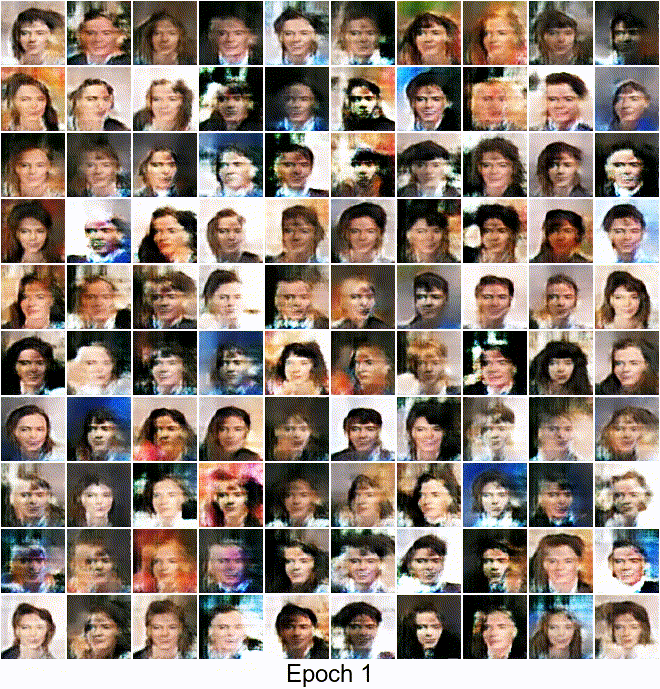 |
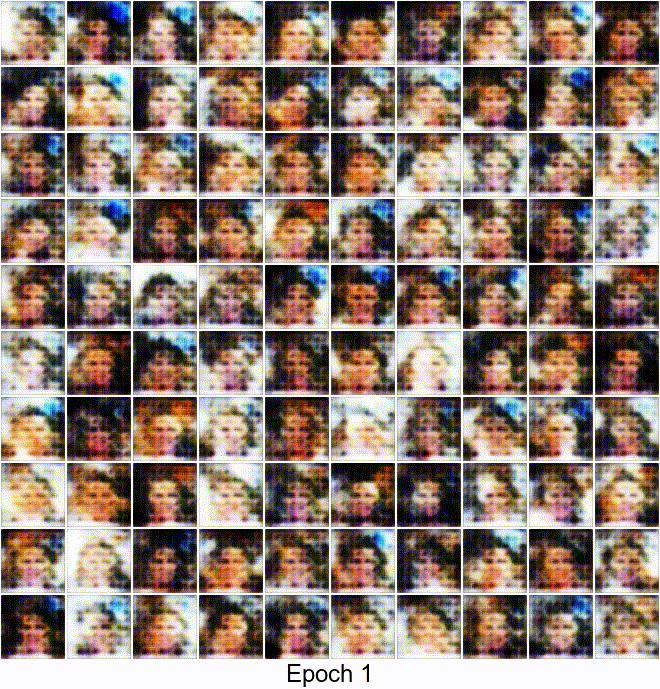 |
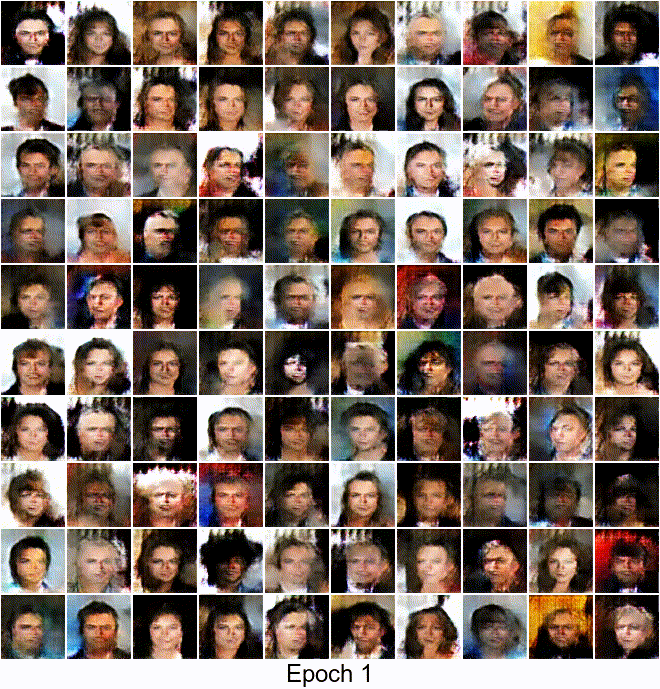 |
Notice how the LSGAN suffers from total mode collapse at epoch 45.
To explore the face manifold in latent space, run
./lerp.py --pretrained ./checkpoints/trained_gan/dcgan-gen.pt \
--dir ./out \
--latent-play 140 \
--cuda
This will use RNG seed 140 to first generate a random tensor of size 100. Then, each dimension will be clamped to ± 3 and saved to a new image./out/dim*.png. The result is 100 different images that only differ by one dimension from the original image. These images can then be analyzed to figure out which dimension control different generative features (e.g. open/close mouth, hair color, gender, nose shape, etc.).
| GAN | WGAN |
|---|---|
 |
 |
To perform linear interpolation in latent space, run
./lerp.py --pretrained ./checkpoints/trained_gan/dcgan-gen.pt \
--dir ./out \
--latent 140 180 \
--nb-frames 50 \
--video \
--cuda
This will linearly interpolate between two random tensors generated from seeds 140 and 180 and create a GIF/MP4 videos of the sequence. The frames and videos will be stored in ./out.
| GAN | WGAN | ||||||
|---|---|---|---|---|---|---|---|
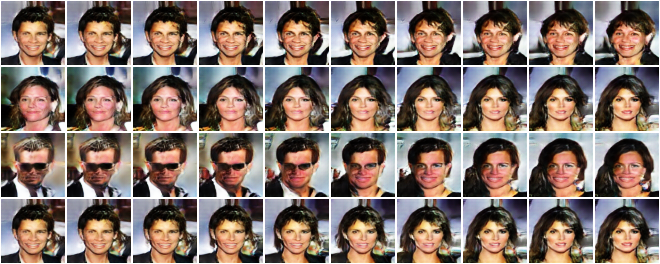 |
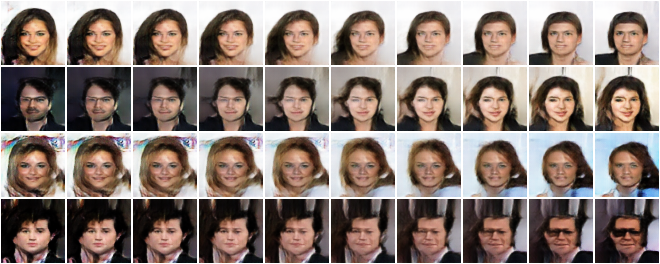 |
||||||
 |
 |
 |
 |
 |
 |
 |
 |
To perform linear interpolation in screen space, run
./lerp.py --pretrained ./checkpoints/trained_gan/dcgan-gen.pt \
--dir ./out \
--screen 140 180 \
--nb-frames 50 \
--video \
--cuda
This will linearly interpolate between two random images generated from seeds 140 and 180 and create a GIF/MP4 videos of the sequence.
| GAN | WGAN | ||||||
|---|---|---|---|---|---|---|---|
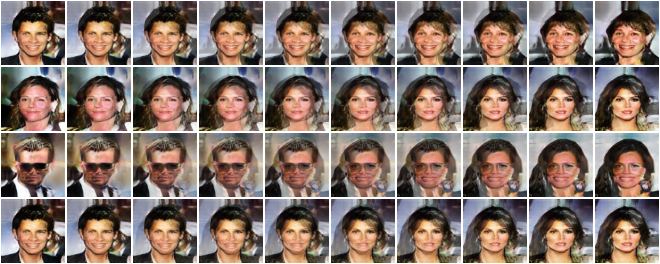 |
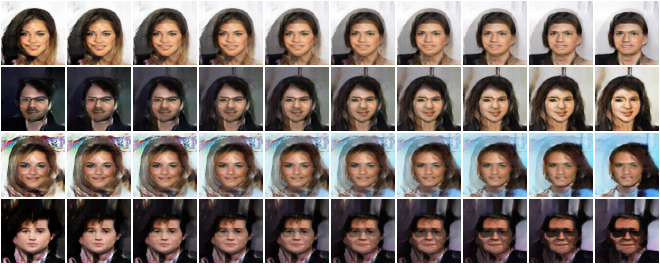 |
||||||
 |
 |
 |
 |
 |
 |
 |
 |
We reuse the code from Shane Barratt to quantitatively measure our models' performance. Calculating the scores using 4096 samples gives the bar graph below.
Arjovsky et al. Wasserstein Generative Adversarial Networks. In Proceedings of the 34th International Conference on Machine Learning, ICML 2017.
Goodfellow et al. Generative Adversarial Nets. In Advances in Neural Information Processing Systems 27: Annual Conference on Neural Information Processing Systems 2014, 2014.
Mao et al. Multi-class Generative Adversarial Networks with the L2 Loss Function. arXiv, abs/1611.04076, 2016.
Radford et al. Unsupervised Representation Learning with Deep Convolutional Generative Adversarial Networks. arXiv, abs/1511.06434, 2015.
